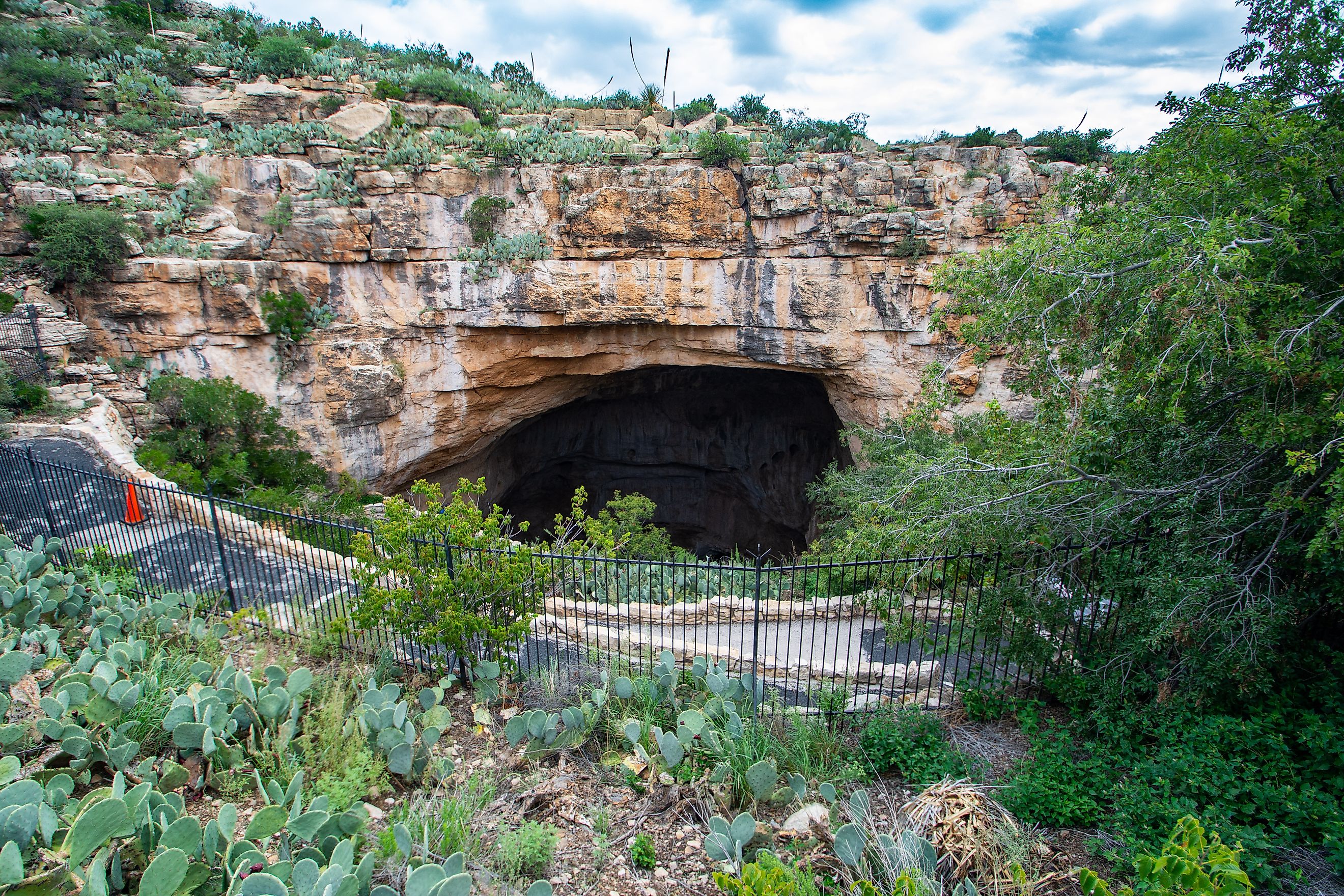
Carlsbad Caverns
In the heart of southeastern New Mexico lies a national treasure that defies expectations not just with its scale but with its silent, surreal beauty. Carlsbad Caverns National Park, hidden beneath the rugged landscape of the Chihuahuan Desert, offers a subterranean world unlike any other in the United States.
From its massive chambers and alien-like rock formations to its unique history and biodiversity, this park is a geological marvel that continues to captivate scientists, tourists, and adventurers.
An Underground Cathedral in the Desert
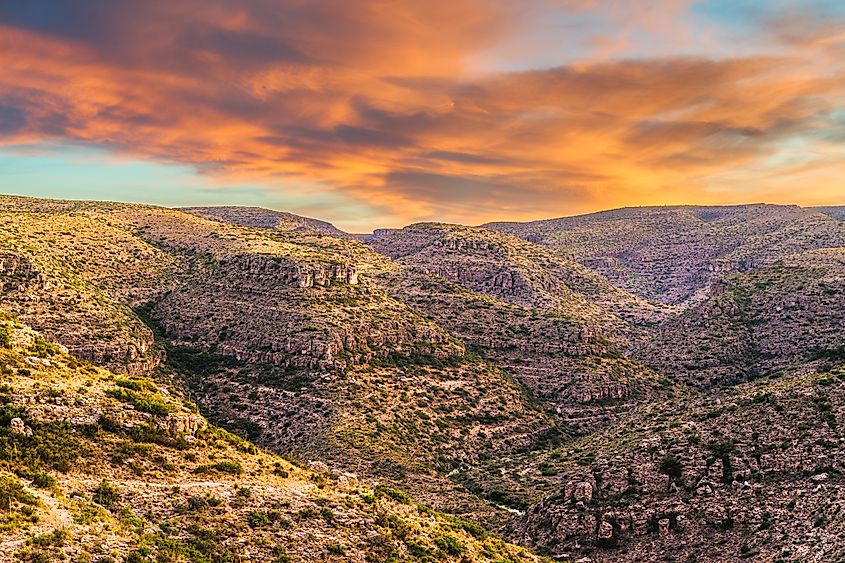
Carlsbad Caverns National Park occupies more than 73 square miles of desert terrain near the base of the Guadalupe Mountains. Above ground, the desert is dotted with yucca, ocotillo, and rugged scrub. But beneath the surface lies an otherworldly cave system carved over millions of years—an underground realm sculpted by time, water, and stone.
At the heart of the park is Carlsbad Cavern, one of the most accessible and awe-inspiring cave systems in North America. With over 30 miles of known passageways and chambers, only a small portion is open to the public—but that small portion is more than enough to leave a lasting impression. The Big Room, the most famous chamber, spans nearly 8 acres, making it one of the largest underground chambers in the world.
How It Formed: From Reef to Cavern
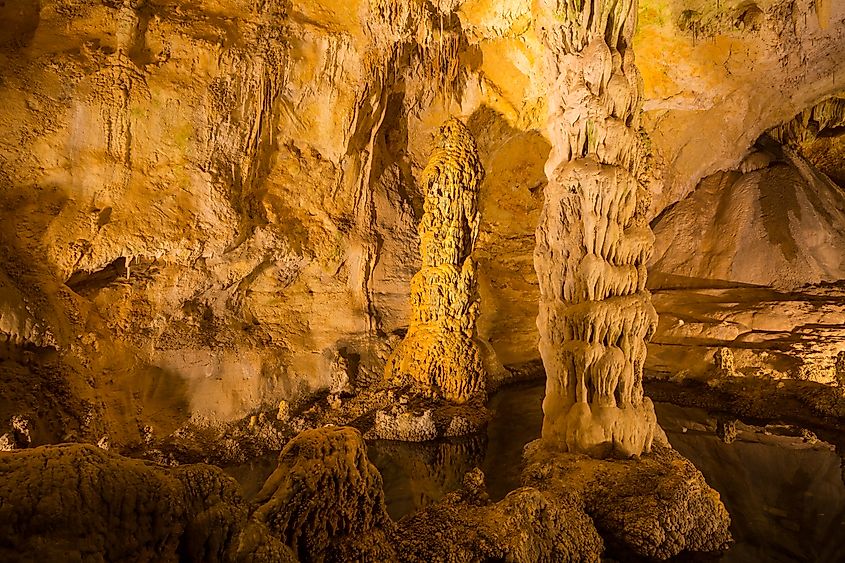
To understand Carlsbad Caverns, you need to go back—way back. About 250 million years ago, the area now known as southeastern New Mexico was submerged beneath a shallow inland sea. Fringing this ancient body of water was the Capitan Reef, a massive limestone formation that also extends into nearby Guadalupe Mountains National Park.
As the sea eventually evaporated and the land rose, acidic groundwater began to seep into the limestone. Over millennia, the slightly acidic water dissolved the rock, creating vast voids and tunnels. As water continued to drip into the cave, it left behind minerals that formed stalactites, stalagmites, draperies, columns, and other mineral features—each one a product of time and geology.
These formations come in all shapes and sizes, from needle-thin soda straws to massive columns like the 62-foot Giant Dome in the Big Room. It’s a living, growing cave system where each drop of mineral-rich water continues to sculpt the subterranean landscape.
Discovery and Early Exploration
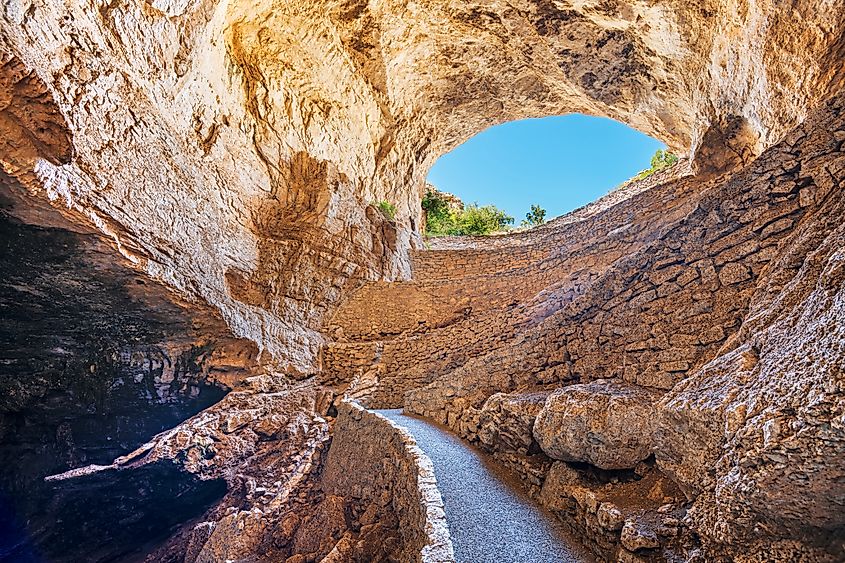
Evidence suggests Native Americans knew of the cavern as early as 1,000 years ago, and pictographs near the entrance testify to its ancient significance. However, the modern rediscovery of Carlsbad Cavern came in the 1880s when settlers in the region noticed a massive swarm of bats pouring out of the desert floor at dusk.
Initially, the cavern was used for mining bat guano, a highly prized fertilizer. One of the guano miners, a young man named James Larkin White, became fascinated by the cave and began exploring it further. With only a kerosene lantern, he ventured deep into the darkness, documenting its vast chambers and remarkable formations.
White later became an informal guide, offering bucket tours into the cave and eventually working with scientists to map the caverns. His early efforts to publicize the site led to a US Geological Survey expedition in 1924. Just a year earlier, in 1923, Carlsbad Caverns was designated a national monument. In 1930, it achieved full national park status.
Going Deep: What Visitors Can See
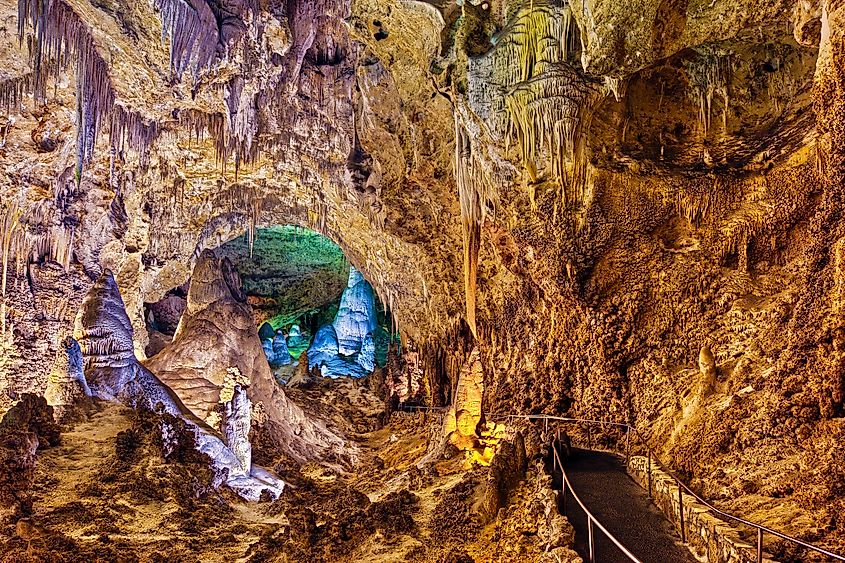
While the full cave system stretches well beyond what the public can access, the visitor experience is still monumental. Guests can either walk the steep Natural Entrance Trail or take an elevator down 755 feet into the heart of the cave system. From there, trails lead through the Big Room, a space so large it could easily hold multiple football fields.
Within the Big Room, you’ll find iconic formations such as:
-
The Giant Dome – A 62-foot-tall stalagmite that towers from the cavern floor.
-
The Bottomless Pit – A seemingly infinite vertical shaft approximately 700 feet deep.
-
The Twin Domes – Delicately fluted stalagmites that display the cave's artistic side.
-
Rock of Ages – A prominent column once immortalized in the echoes of cave tours.
Self-guided and ranger-led tours allow visitors to explore at their own pace, and seasonal events like lantern-lit walks recreate the early days of exploration.
The Bat Spectacle
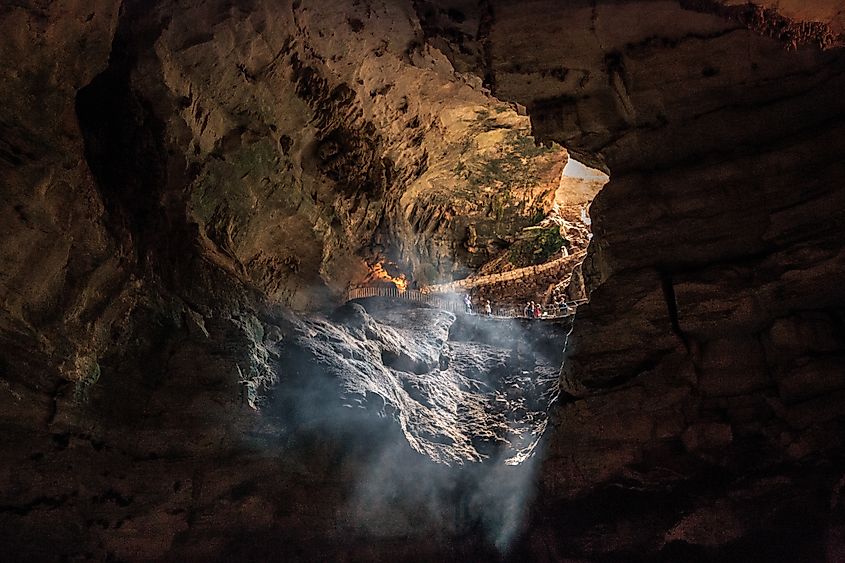
Every summer, a different kind of show draws visitors to the caverns—not beneath the ground, but just above it. Around dusk from May through October, hundreds of thousands of Mexican free-tailed bats emerge from the cave’s entrance in a swirling black cloud. This nightly spectacle, best viewed from the park’s amphitheater, is one of nature’s most underrated phenomena.
The bats roost in a chamber known as Bat Cave and spend their nights feeding on insects across the desert landscape. Scientists estimate that up to one million bats may inhabit the cave during peak season. Visitors are encouraged to attend ranger talks beforehand to better understand the ecological role of these creatures.
Beyond Carlsbad Cavern: More Caves, More Mysteries
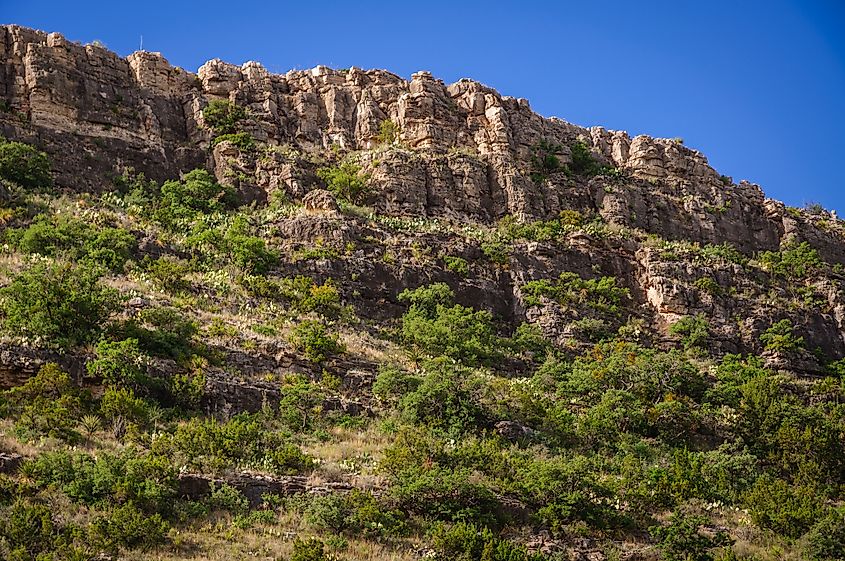
While Carlsbad Cavern is the crown jewel, it’s not alone. The park protects 83 individual caves, each with its own character and significance. Among the most notable is Slaughter Canyon Cave, home to The Monarch, one of the world’s tallest natural columns at 89 feet.
Then there’s Lechuguilla Cave, discovered in earnest in 1986. What began as a small lead quickly became one of the most extraordinary cave discoveries in the world. Over 150 miles of passages have since been mapped, making it the fifth-longest cave in the world and the third longest in the United States. Lechuguilla is not open to the public, but its unique formations and delicate ecosystem have made it a focal point for ongoing research. In 1993, Congress established a special protection zone to preserve the cave’s integrity.
Life Above Ground
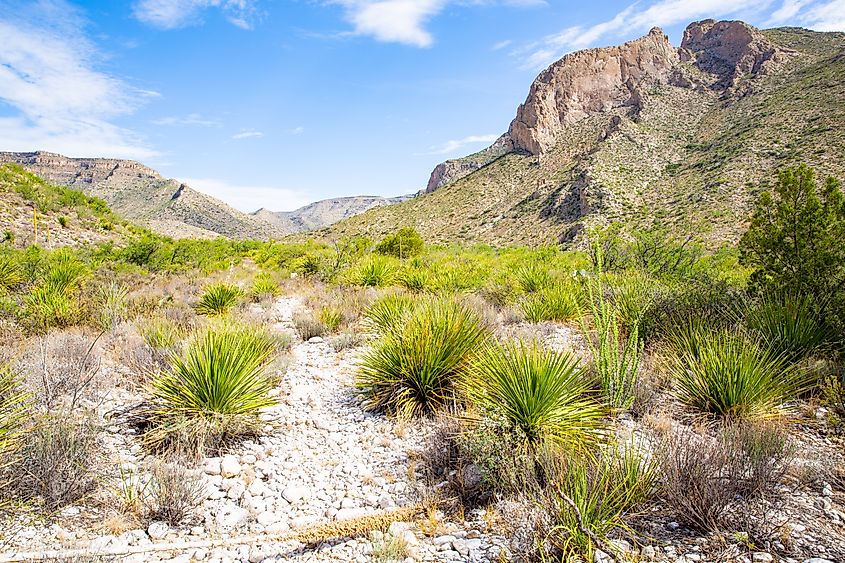
While most come for the caves, the park’s surface has its own charm and ecological importance. Located within the Chihuahuan Desert, the terrain supports hardy desert flora such as desert willow, Texas black walnut, and spiky yucca. Wildlife includes mule deer, bobcats, coyotes, rattlesnakes, and occasionally mountain lions.
The park’s diverse habitats—ranging from limestone cliffs to riparian zones like Rattlesnake Springs—offer unique opportunities for birdwatching and plant identification. These above-ground ecosystems are as essential to the park’s health as the cave systems below.
A UNESCO World Heritage Site
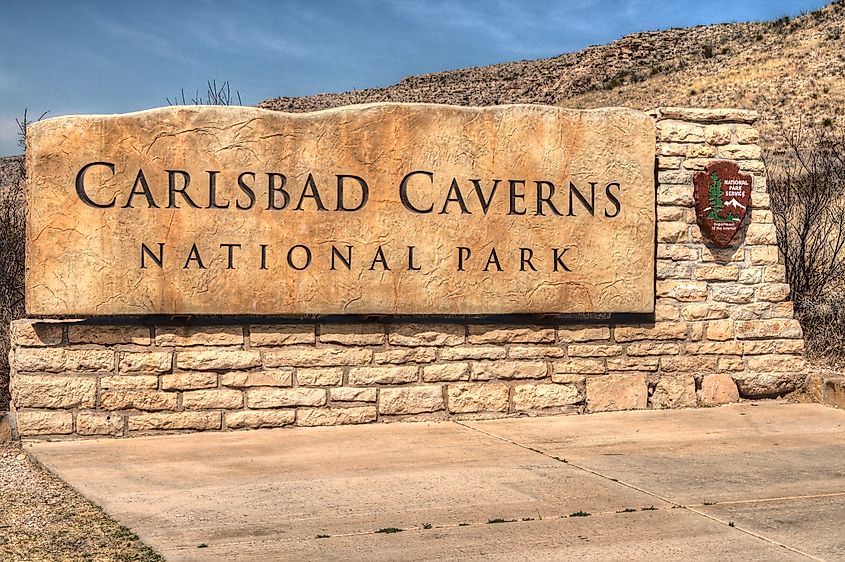
In 1995, Carlsbad Caverns National Park was officially designated a UNESCO World Heritage Site, placing it among the planet’s most significant natural landmarks. The honor recognizes not only the park’s size and beauty, but also its contribution to the understanding of geological processes and underground ecosystems.
With its towering formations, mysterious passages, and ongoing discoveries, the park continues to shape our understanding of subterranean environments and their role in the broader ecological web.
Visiting the Park: What You Need to Know
-
Location: Southeastern New Mexico, near Carlsbad, NM.
-
Getting There: The park entrance is about 18 miles southwest of the town of Carlsbad.
-
Hours: The visitor center and cave are open year-round, though hours may vary seasonally.
-
Fees: Entrance fees apply, with optional extra tours of select cave areas.
-
Accessibility: Elevators allow access to the Big Room level for visitors with mobility concerns.
-
Best Time to Visit: Late spring through early fall offers the best chance to see the bats and enjoy cooler underground temperatures.